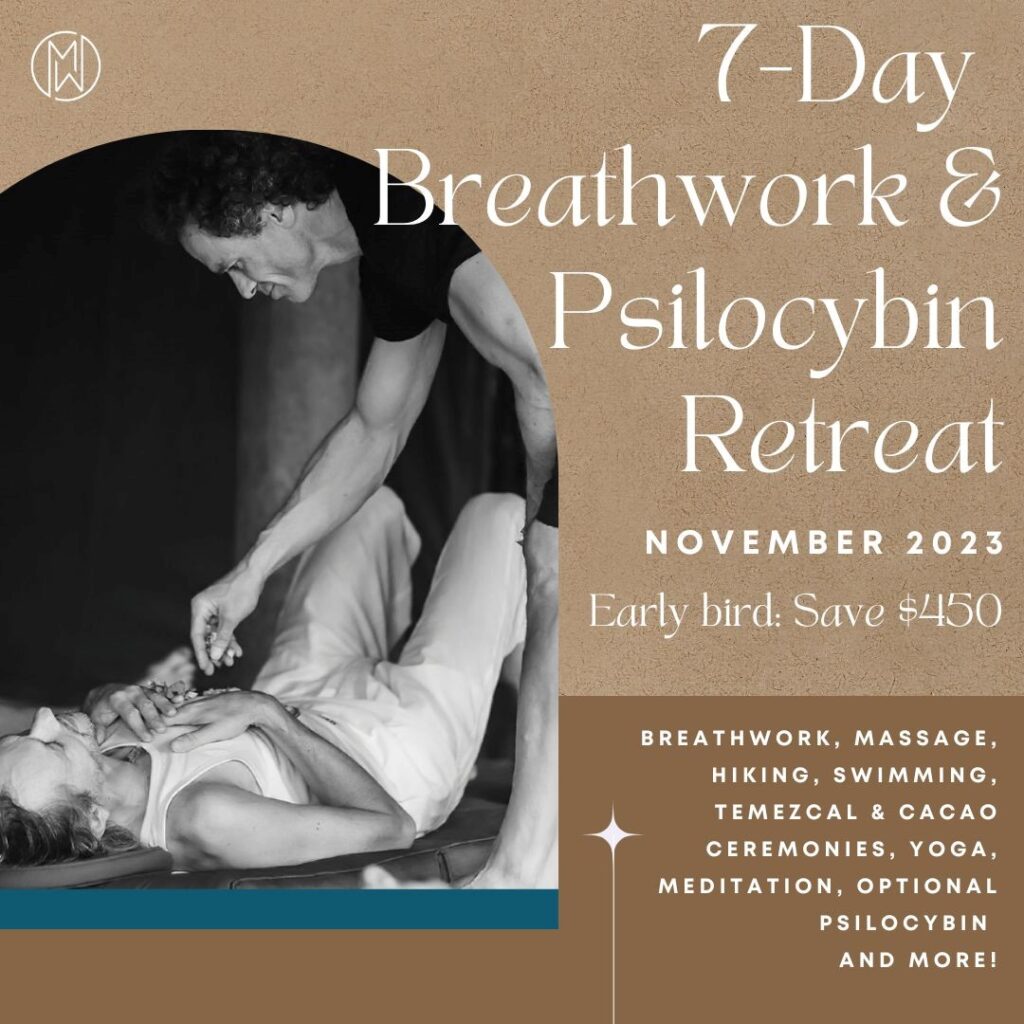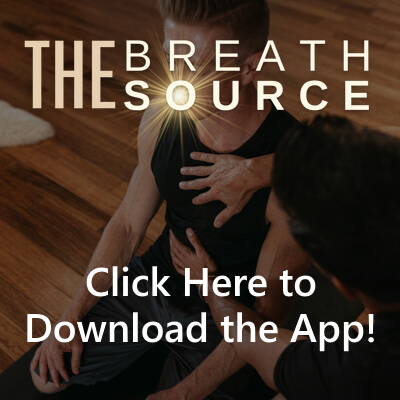First off, read this book! It’s fascinating, engaging and it will inspire you to improve your breath!
Seven Primary Takeaways…
- Shut your mouth: Mouth breathing spikes cortisol, raises blood pressure, lowers HRV, promotes bacteria colonized the nose, leads to sleep apnea, fatigue, moodiness, bad breath, frequent urination and stomachaches.
- Breathe through your nose: Blood pressure drops, sleep improves, carbon dioxide levels rise, heart rate normalizes, stress and snoring decrease and sports performance increases by 5-10%.
- Extend your exhales: This builds nitric oxide and improves oxygen uptake. We typically use only a fraction of our lung capacity. Exercise the diaphragm by lengthening the breath through the nose.
- Chew: This builds facial muscle for a stronger jaw, wider mouth, better developed nasal passages, straighter teeth and less facial skin sagging. Almost all skulls from 300+ years ago show these advantages because people chewed more. We can increase bone growth in our faces and jaw by chewing more at any age. Eat rough, raw and hearty foods that are tougher to chew.
- Breathe more: Over-breathing (aka breathwork) can be profoundly therapeutic, teaching us to be the pilots of our bodies, rather than passengers.
- Hold your breath: Flex your Chemoreceptors. Feinstein believes anxiety could be the result of people constantly over-breathing in an attempt to unconsciously depress their C02 levels – as it’s the connection between the chemoreceptors and amygdala that governs our fear response and breath regulation.
- Slow your breath: Breathe 5.5 seconds in, 5.5 seconds out for peak efficiency.
And Thirty-Seven additional facts from the book…
– Inhales activate the SNS (Sympathetic Nervous System), while exhales activate the PNS (Parasympathetic Nervous System). They must be balanced for us to to be balanced.
– Nose breathing has been shown to increase arterial oxygen uptake by 18% over mouth breathing, because the nasal breathing creates nitric oxide. Thus, longer, slower nose breathing allows us to absorb more oxygen.
– Lung capacity has been shown to be the best indicator of longevity and health, making full-breaths a measure of our living capacity.
– 5.5 second inhale, 5.5 second exhale is optimal breath, equating to 5.5 full breaths per minute and 5.5 liters consumed per minute at rest.
– On average we breathe 22,000 times per day, breathing twice as many breaths per day as we need while taking in only half the volume we once did. (.5 liters per inhale vs. 1 liter.)
– 70% of the toxins in our bodies are expelled by our lungs.
– Nerves in our lower lungs (accessed through deep long breathing) engage our PNS to calm and relax us.
– Short hasty breaths arouse our SNS increasing our heart rate, lowering HRV, constricting blood vessels, dilating our pupils, engaging adrenaline and rerouting blood away from our organs to our muscles and brain… readying our body for fight or flight.
– Gentle exhales are relaxing, lowering heart rate and blood pressure.
– Today many of us live in a constant state of arousal with our vagus nerve constantly half-engaged, leading to an increased risk of chronic stress, anxiety, sleep disorders, depression, chronic fatigue, autoimmune conditions, heart issues and even cancer as a result of our autonomic nervous system being over stimulated.
– 8 of our top 10 organs that contract the most cancer are those that get starved of blood when we’re living with chronic stress.
– Vagus nerve stimulation through breathing (and belly pumps) can restore the autonomic nervous system to natural function. Up to 80% of our vagus nerve signals run from the stomach up to the brain – meaning we can use our breath and bellies to rewire our brains.
– Decreased vagal nerve tone has been shown to increase cortisol, pro-inflammatory cytokines, fasting glucose, and hemoglobin A1C levels. Vagus nerve stimulation can help heal a dysfunctional HPA axis and nervous system.
– The autonomic nervous system is within our control, through breathing and meditation. Tumo monks can reduce their metabolic rate by up to 65% and increasing their body temperature by double digits while sitting for hours with wet sheets draped over them in freezing conditions.
– Wim Hof has proven his ability to direct his immune response whether submerged in freezing water, running desert marathons without hydration and when injected with E Coli bacteria. Not only that, but he’s proven he can teach others to do the same.
– Heavy breathing techniques release stress hormones (adrenaline, cortisol and norepinephrine) which can help kill off pathogens, lower inflammation and flood the body with endorphins & dopamine once completed.
– Deep breathing has been shown to lower CRP (whole body inflammation) by a factor of 40 in just a few weeks.
– At rest 750 ml of blood flow to our brains every minute. This can decrease by as much as 40% in a few minutes while doing breathwork (for up to 15 minutes before the body compensates) as blood vessels narrow, affecting the hippocampus and parieto-occipital cortex which govern visual processing, memory, our experience of time and our sense of self.
– Over-breathing in breathwork creates a sustained elevated PH imbalance which sends distress signals throughout the body and to the limbic system which governs our emotions & arousal, perhaps even tricking the limbic system into thinking it’s dying. This might account for many of the death and rebirth experiences people have while doing breathwork.
– Over breathing expels too much C02 making blood PH rise and become more alkaline. Optimal cellular function is at 7.4 ph.
– Science can not account for or currently understand the vast and profound physical and emotional effects breathing has on us. Could it be that breath is more than air alone? Perhaps it’s because air when breathed becomes infused with a life-force energy {Prana/India, Chi/Chinese, Pneuma/Greek, Ruah/Hebrew, Qi /Japan, Orenda/Iriquois} as every ancient culture before us has believed.
– They all believe the same thing. The more life-force energy something has, the healthier it is and breath is the primary mechanism to grow and preserve our energy. The more our energy becomes blocked, the more disease we have.
– Ancients understood that air is more than carbon and oxygen, it’s filled with subtle energy that we can use to heal our bodies and expand our energy.
– The best way to stay healthy is to promote electron transference through upping our oxygen intake. Breathe long, less and slowly through the nose to send the maximum amount of oxygen to our tissues, allowing our cells to promote electron reactivity.
– Health, vitality and healing requires moving energy through our bodies and exercise isn’t always the best way to do this.
– Controlling and training our chemoreceptors is the key to physical sports performance and mental health. Training our chemoreceptors (which trigger our fear response from the amygdala) to be less reactive to C02 deprivation may be the best way of treating mental health issues – which is why slow breathing exercises and breath holds work far better to ease and reverse anxiety than trying to get patients to think differently. In short, we need to teach anxious people to slow and hold their breath.
– 50% of Americans will suffer from depression at some point. 13% already take SSRI’s with less than half benefitting from them.
– 80% of office workers live in a constant state of partial attention where they breath shallow all day long, unknowingly holding their breath while suffering from “Email Apnea.”
– Anxious people are anxious because they breathe too much… and they breathe too much because they are anxious. They have become over sensitive to C02, so they over-breathe to keep it from rising. (Exhaling repeatedly through the mouth depresses our C02 levels.)
– A few hits of 7% C02 mixed with room air significantly increases sports performance.
– Our lungs are our principal excretory organ for weight loss. When a pound of fat is oxidized, 20% turns into water and 80% into carbon dioxide, so breathing is literally our main way to lose weight. To maximize weight loss, breathe more deeply throughou the day and while exercising.
– Eating softer foods since the industrial revolution has changed our facial structure from a lack of chewing, negatively affecting our breath. Our mouths have become too narrow and our nasal passages are under-developed as a result of chewing less.
– Crooked teeth are a result of our shrinking mouths.
– Braces make mouths smaller, and hinder facial growth, thus creating breathing issues. Standard orthodontics make breathing deficiencies worse.
– Breast feeding helps to build the upper palette of the mouth, which is critical to healthy facial structure. The longer children breast feed the better, developing stronger mouth muscles and creating wider nasal passages.
– Chewing makes us look younger by building bone mass in the face. Using our back molars releases stem cells that produces bone mass, combating bone loss. It’s this bone loss that leads to facial skin sagging. So, chew for less wrinkles!





